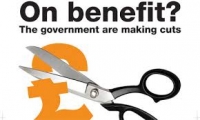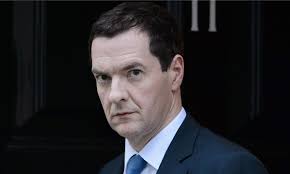Osbourne's Controversial Benefits Cuts Kick In
Tuesday 04 April, 2017 Written by Daily Mirror
The Tax Credits two-child limit
Coming into force 6 April 2017 and aimed to save £1.2billion a year by 2020.
Number of people affected: 515,000 families by 2020
What is it? Child Tax Credit is worth up to £2,780 per child per year. However, it will only be paid for the first two children in any family.
Why the cut is controversial: It will deny huge sums of money to large families in the future. Also, women who have a third child through rape will have to prove their ordeal to get a special exception.
Who is affected? The following people will be affected by the changes:
Those who have a third (or later) child born after 6 April 2017
Those who stopped claiming Child Tax Credit for six months or more but then returned to claim the benefit
Who isn't affected? The following people will not be affected by the changes:
Those who have three or more children already alive and have claimed the benefit without a long break
Women who have had a third child born through rape – but the mum must prove their ordeal
Parents who have had twins, triplets etc born to families who had one child
People with disabled children, who are counted separately
The end of the 'family element'
When it's coming into force: 6 April 2017
How much is being cut: £540million a year by 2020
Number of people affected: 970,000 families by 2020
What is it? It is an extra payment in Child Tax Credit called the "family element" and it is worth £545 a year.
Why the cut is controversial: A million new claimants will be deprived the payment, however those who are already in the system will continue to be paid.
Who is affected? Families who claim Child Tax Credit entirely for children born after 6 April 2017.
Who isn't affected? Families who claim Child Tax Credit for any child born before 6 April 2017.
Disability benefit cuts of £30 a week
When it's coming into force: It's already in force. It started on 3 April 2017.
How much is being cut: £350million a year by 2020
Number of people affected: 500,000 in the long term
What is it? People who claim Employment and Support Allowance (ESA) will receive £29.05 less every week if they are dement fit for 'work-related activity'. They will get £73.10 – the same as jobseekers' allowance – instead of £102.15.
Why the cut is controversial: The benefit cut has been criticised by Labour, the House of Lords and several charities. Many have said that those who claim Employment and Support Allowance need more support than people on jobseekers. Charity Mind said the £1,500-a-year cut "will make their lives even more difficult and will do nothing to help them return to work".
Who is affected? People who started claiming ESA and are deemed fit for 'work-related activity' after 3 April 2017. Also, people who stopped claiming ESA for 12 weeks or more, then return to it.
Who isn't affected? Current claimants if they keep claiming without a long break and ESA claimants in the more serious 'support group'.
Young people blocked from housing benefit
When it's coming into force: It came into force on 1 April 2017.
How much is being cut: £105million total by 2020
Number of people affected: 11,000 in the long term
What is it? Young jobseekers aged between 18 and 21 will no longer be able to get Housing Benefit – which is always paid directly to the landlord.
Why the cut is controversial: Charity Centrepoint said the cut could "force thousands of young people onto the streets" and cost more than it saves.
Who is affected? People aged 18 to 21 on jobseekers' allowance who are eligible for Housing Benefit.
Who isn't affected?
Current claimants
Orphans and care leavers
Youngsters earning at least £89.60 a week
Youngsters in temporary accommodation for the homeless
Youngsters who have their own children to care for
Youngsters subject to or threatened with domestic violence
Youngsters on some disability benefits
Youngsters whose parents live abroad
Youngsters where it's 'inappropriate' to return to their parents' home
Changes for widows
When it's coming into force: 6 April 2017
How much is being cut: £100million a year in the long term
Number of people affected: Unknown but potentially in the tens of thousands
What is it? Three different benefits are being replaced with one new Bereavement Support Payment. The benefit is worth £3,500 plus £350 a month for 18 months for claimants with dependent children. It is worth £2,500 plus £100 a month for other claimants.
Why the cut is controversial: It is split on whether people will be better off - 48% will be worse off and 52% better off. Charities have warned that the payments period is too short and widowed people are often in need of cash for longer. The government believe the change is positive.
Who is affected? Anyone who can claim bereavement benefits.
Who isn't affected? People already receiving bereavement benefits or whose spouse/civil partner died before 6 April 2017.
The Benefits Freeze
When it's coming into force: Ongoing
How much is being cut: £3.5BILLION a year by 2020
Number of people affected: Millions
What is it? Nearly all working-age benefits are frozen at their 2015-16 rates for four years.
Why the cut is controversial: Benefit payments are being frozen but that means claimants will be worse off because of rising inflation and living costs. A government impact assessment, which was obtained by the Liberal Democrats, said the average claimant will be £6 a week worse off.

Image: Ex Chancellor George Osbourne
Leave a comment
Make sure you enter all the required information, indicated by an asterisk (*). HTML code is not allowed.
Join
FREE
Here










